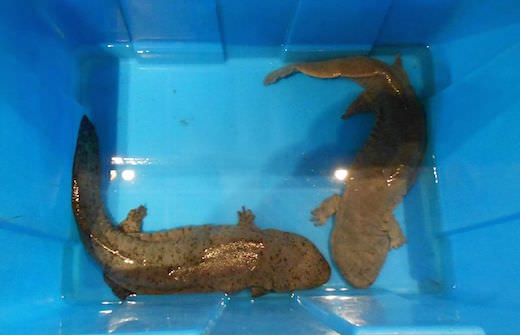Chinese giant salamander

Critically endangered
This species of salamander is actually the biggest living species of salamander on the face of the earth. As if that wasn’t enough, it is also the largest amphibian in the world as well as it is able to reach a length of around 180 cm, or six feet in length. Despite being able to reach these lengths, it rarely actually does grow to this size and its tail makes up 60% of its size. It is most commonly located in fast flowing lakes, streams, and rivers in cool waters located in the wilderness out in China. Its diet is largely made up of crustaceans and various types of fish yet unfortunately it is now considered critically endangered. Since the 1950’s, this species’ population has declined by a whopping 80%, which is extremely worrying to say the least.
Population Distribution
Despite being able to lay over 500 eggs during the breeding season, which runs from August to September, the species is still critically endangered for a number of reasons, which we’ll be looking at shortly. Though it is predominantly located in China, it has also been rarely sighted in Taiwan, there is also a very similar species located in Japan. It was once a common sight in southern and South Western China, but these days its range only tends to span the basins of a few rivers including the Yangtze, Pearl rivers, and yellow rivers.
Threats
These creatures once thrived, now, less than a century later, it is verging on the edge of extinction, all thanks to man. Not only are these creatures hunted illegally for sport, they are also farmed as a luxury food stuff, and are used in many Traditional Chinese Medicines. Pollution and the destruction of their habitats is also considered to be a main factor in their gradual population declines over the decades. Pollution and the destruction of streams and lakes has also severely taken its toll. There is also a virus responsible for wiping out numerous salamanders, one known as ‘Epizootic Ranavirus Infection’ which causes extreme haemorrhaging in adult and young salamanders. So extreme was this virus, that it was named the ‘Chinese Giant Salamander iridovirus’ (GSIV).